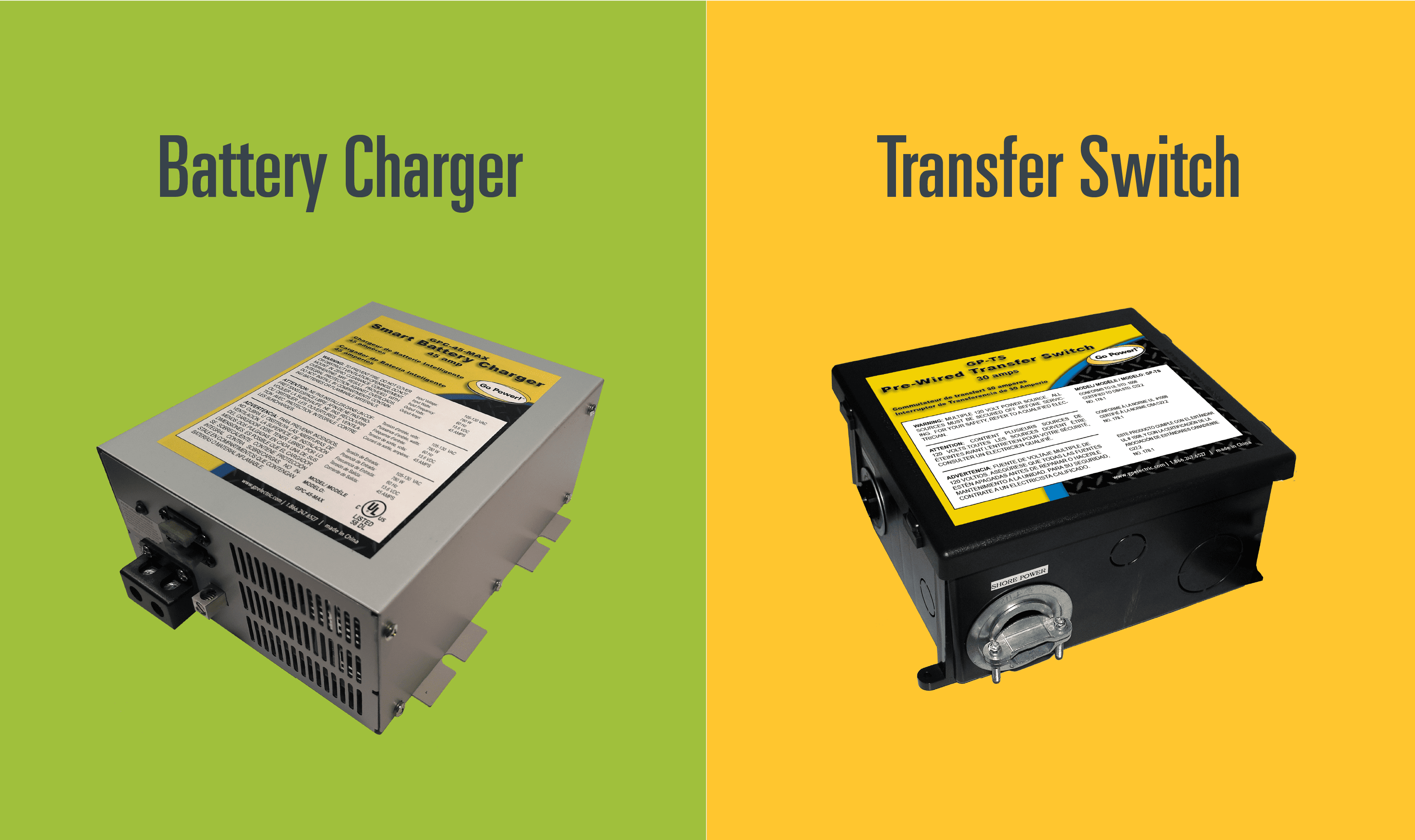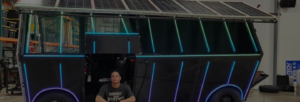Off-Grid Power – Air Conditioners Solar power and lithium battery technology have revolutionized the way...
Read MoreRV Solar 101: Power Converters, Battery Chargers, and Transfer Switches (Part 6)
In RV applications, the terms ‘power converter’ and ‘battery charger’ are used interchangeably. The converter takes AC power (from shore power or a generator), converts it to DC, and uses it to charge the RV batteries.
Good converter/chargers provide high throughput and will dramatically shorten the time it takes to charge the batteries — kind of like filling your pool with a fire hose instead of a garden hose. A converter charger will provide savings in generator fuel and shore power charges, and minimizing your generator run times is likely to make you more popular in the RV park.
Transfer switches provide both safety and convenience—who wants to be manually transferring power sources at night or in the middle of a storm?
Transfer switches automatically switch between two sources of incoming AC power. It’s critical that different AC power sources are kept separate from each other—failing to do so can result in damaged electrical equipment or even fire.
Once the different AC power sources are attached to the transfer switch, the switch will select the appropriate power source to use based on your preferences. For example, it can send power to your RV refrigerator when you’re driving, allowing you to turn off the fridge’s propane source (a safety issue when on the road).
LATEST NEWS
Watch product troubleshooting videos, read the latest in company updates, and stay up-to-date on trade-shows and events.
Creating the Ultimate Solar-Powered Car
Few people have a more diversified portfolio when it comes to custom car builds than...
Read MoreGo Power! Wins Gold in
Go Power! Wins Gold for Favorite RV Solar Product in the 2024 Wildsam Reader’s Choice...
Read More
STAY UP TO DATE
Get news, product specials, and event invites directly to your inbox.








